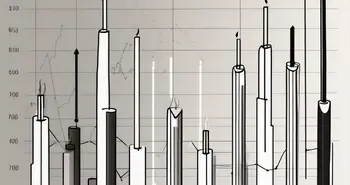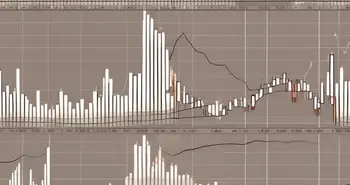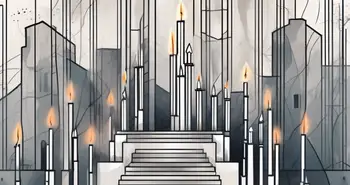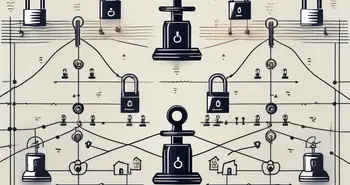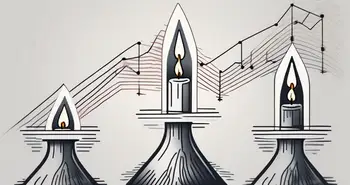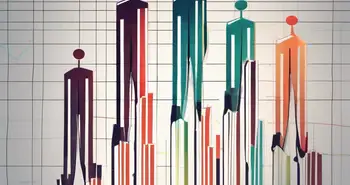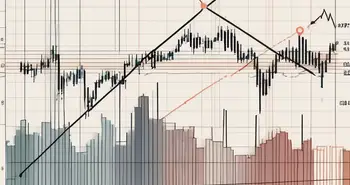The Dead Cat Bounce Candlestick Pattern
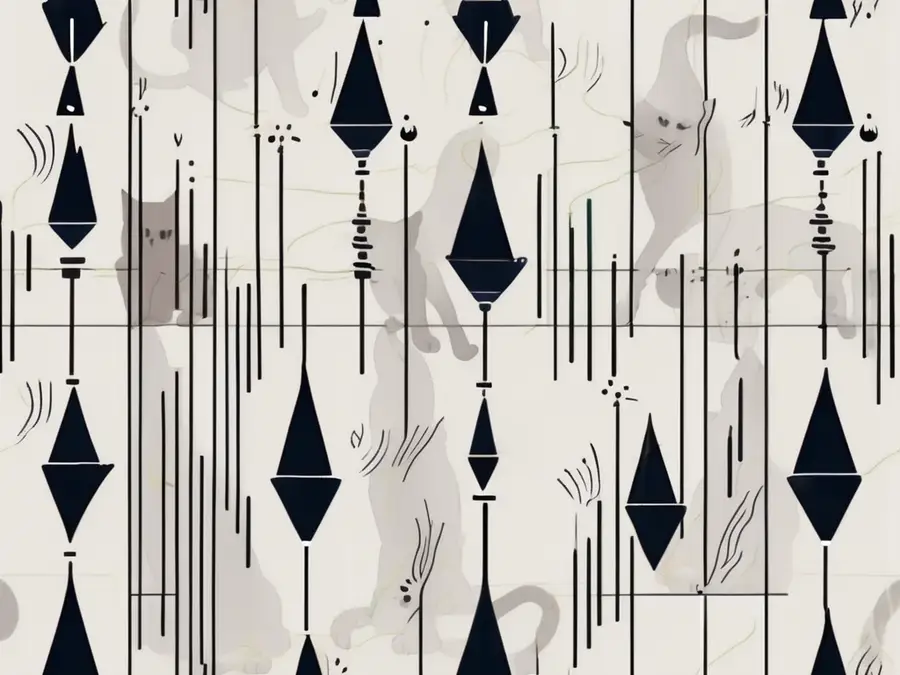
In the world of stock market trading, there are countless strategies and patterns that traders use to make informed decisions. One such pattern that has gained popularity in recent years is the Dead Cat Bounce candlestick pattern. Despite its unusual name, this pattern can provide valuable insights into the market's direction, allowing traders to capitalize on potential opportunities. In this article, we will uncover the secrets of the Dead Cat Bounce candlestick pattern and explore how it can be effectively used in trading.
Understanding the Basics of Candlestick Patterns
Candlestick patterns have been used in technical analysis for centuries, originating in Japan in the 18th century. These patterns are graphical representations of price movements over a specific period of time and are widely used by traders to predict future price trends. The Dead Cat Bounce is one such pattern that has caught the attention of many traders due to its interesting dynamics.
The Origin of Candlestick Patterns
The concept of candlestick charts was developed by Japanese rice merchants to analyze and predict price movements in the commodity markets. Each candlestick represents a specific time interval, commonly a day, and consists of four main components – the opening price, closing price, highest price, and lowest price during that period.
The Importance of Candlestick Patterns in Trading
Candlestick patterns are an essential tool for traders as they provide valuable information about market sentiment. By analyzing the various candlestick patterns that emerge on charts, traders can identify potential buying or selling opportunities. These patterns help traders understand the psychology of market participants and make informed decisions based on historical price movements.
The Dead Cat Bounce Phenomenon Explained
While the name may sound peculiar, the Dead Cat Bounce refers to a specific market phenomenon. It occurs when a declining stock or market experiences a temporary rebound before continuing its downward trend. This pattern may take the form of a sharp price increase or a brief period of sideways movement, before resuming its decline.
What is the Dead Cat Bounce?
The Dead Cat Bounce pattern is characterized by a sudden and short-lived surge in price that lures unsuspecting traders into believing that the market has reversed its course. The name originates from the idea that even a dead cat will bounce if it falls from a great height. However, just like the cat's bounce is temporary, so is the price increase in the Dead Cat Bounce pattern.
The Psychology Behind the Dead Cat Bounce
The Dead Cat Bounce pattern reflects the psychology of the market participants. During a downtrend, many investors may panic and sell their holdings, leading to a rapid decline in price. However, at a certain point, some traders may perceive the stock as being undervalued and decide to buy it, creating a temporary surge in demand.
At this stage, other traders may notice the rise in price and interpret it as a sign of a trend reversal. They too jump on the bandwagon, creating a so-called “bull trap.” Unfortunately, the market eventually reasserts its downward pressure, and those who bought into the temporary rally may find themselves incurring significant losses.
Identifying the Dead Cat Bounce Candlestick Pattern
To effectively trade the Dead Cat Bounce pattern, it is crucial to accurately identify it amidst the noise of the market. Understanding the key characteristics of this pattern and avoiding common misconceptions is essential for successful trading.
Key Characteristics of the Dead Cat Bounce Pattern
The Dead Cat Bounce pattern typically exhibits several recognizable characteristics. First and foremost, it occurs within a larger downtrend. It is essential to identify the prevailing trend before attempting to recognize this pattern. Additionally, the price increase during the Dead Cat Bounce is often accompanied by a significant increase in trading volume.
Another characteristic of this pattern is the relatively short duration of the price increase. It is important to differentiate between a true trend reversal and a temporary bounce by analyzing the overall market context and the subsequent price movement.
Common Misconceptions and Mistakes
Despite its popularity, the Dead Cat Bounce pattern can be challenging to trade due to common misconceptions. One mistake is assuming that every brief price increase signifies a Dead Cat Bounce. It is crucial to meticulously analyze the context and confirm the pattern's presence through adequate technical analysis.
Moreover, timing is key when trading this pattern. Attempting to catch the exact top of the bounce can be risky, as the market can reverse sharply. Patience and diligent analysis are essential to avoid falling victim to a false reversal.
Strategies for Trading the Dead Cat Bounce
Successfully trading the Dead Cat Bounce pattern requires a well-thought-out strategy that factors in both entry and exit points, as well as effective risk management techniques.
When to Enter and Exit a Trade
Entering a trade during the Dead Cat Bounce requires patience and confirmation. It is advisable to wait for a pullback after the price increase, accompanied by a decrease in trading volume. This indicates that the temporary bounce is losing momentum, potentially signaling the resumption of the downtrend.
When it comes to exiting a trade, it is essential to set clear profit targets and adhere to them. Traders should also consider implementing a stop-loss strategy to limit potential losses if the expected trend reversal does not occur.
Risk Management Techniques
Risk management is a crucial aspect of trading the Dead Cat Bounce pattern. Traders should carefully assess their risk tolerance and implement appropriate position sizing and stop-loss orders. It is also essential to diversify one's portfolio to mitigate potential losses from unsuccessful trades.
The Impact of Market Conditions on the Dead Cat Bounce
Market conditions play a significant role in the reliability and effectiveness of the Dead Cat Bounce pattern. Understanding how different market trends and levels of volatility can affect the pattern is essential for successful trading.
How Different Market Trends Affect the Pattern
The Dead Cat Bounce pattern works best in a bearish market environment when there is a clear downtrend. It is vital to identify stocks or markets that are already exhibiting signs of weakness. Attempting to trade this pattern in a bullish market or during periods of consolidation may result in false signals and losses.
The Role of Market Volatility
Market volatility can significantly impact the Dead Cat Bounce pattern. Higher levels of volatility can lead to exaggerated price movements and false reversal signals. Traders should be aware of the overall market volatility and adjust their trading strategy accordingly.
Throughout my years of experience as a trader, I have encountered numerous instances of the Dead Cat Bounce pattern. It is essential to approach trading with discipline and avoid falling for the quick gains that may arise from this pattern. Trusting your analysis and sticking to your strategy is critical for long-term success.
FAQ
What is the Dead Cat Bounce pattern?
The Dead Cat Bounce pattern refers to a temporary price increase in a declining stock or market before it continues its downward trend. It lures traders into believing that a trend reversal is occurring, only to trap them with further losses.
How can I identify the Dead Cat Bounce pattern?
The Dead Cat Bounce pattern can be identified by its key characteristics, which include a larger downtrend, a short-lived price increase, and a significant increase in trading volume during the bounce. It is crucial to confirm the pattern through thorough technical analysis.
What are the risks of trading the Dead Cat Bounce pattern?
Trading the Dead Cat Bounce pattern carries inherent risks. One common risk is mistaking a temporary price increase for a genuine trend reversal. Additionally, timing the market accurately can be challenging, leading to losses if the expected reversal does not occur.
How can I manage risk when trading the Dead Cat Bounce pattern?
Implementing effective risk management techniques is crucial when trading the Dead Cat Bounce pattern. This includes setting clear profit targets, implementing stop-loss orders, and diversifying your portfolio to mitigate potential losses from unsuccessful trades.
What market conditions are best suited for trading the Dead Cat Bounce pattern?
The Dead Cat Bounce pattern works best in a bearish market environment when there is a clear downtrend. Attempting to trade this pattern in a bullish market or during periods of consolidation may result in false signals and losses.
Ready to put your knowledge of the Dead Cat Bounce pattern to the test? Look no further than Morpher, the revolutionary trading platform that's changing the game with blockchain technology. With Morpher, you can trade a variety of asset classes, from stocks and cryptocurrencies to unique markets like NFTs and sneakers, all with zero fees and infinite liquidity. Embrace the power of fractional investing, short selling without interest fees, and up to 10x leverage to maximize your trading strategies. Plus, enjoy the safety of a non-custodial Morpher Wallet, giving you full control over your funds. Experience the future of trading with Morpher's unique Virtual Futures on the Ethereum Blockchain. Sign Up and Get Your Free Sign Up Bonus today, and elevate your trading to new heights!

Disclaimer: All investments involve risk, and the past performance of a security, industry, sector, market, financial product, trading strategy, or individual’s trading does not guarantee future results or returns. Investors are fully responsible for any investment decisions they make. Such decisions should be based solely on an evaluation of their financial circumstances, investment objectives, risk tolerance, and liquidity needs. This post does not constitute investment advice.

Painless trading for everyone
Hundreds of markets all in one place - Apple, Bitcoin, Gold, Watches, NFTs, Sneakers and so much more.

Painless trading for everyone
Hundreds of markets all in one place - Apple, Bitcoin, Gold, Watches, NFTs, Sneakers and so much more.


